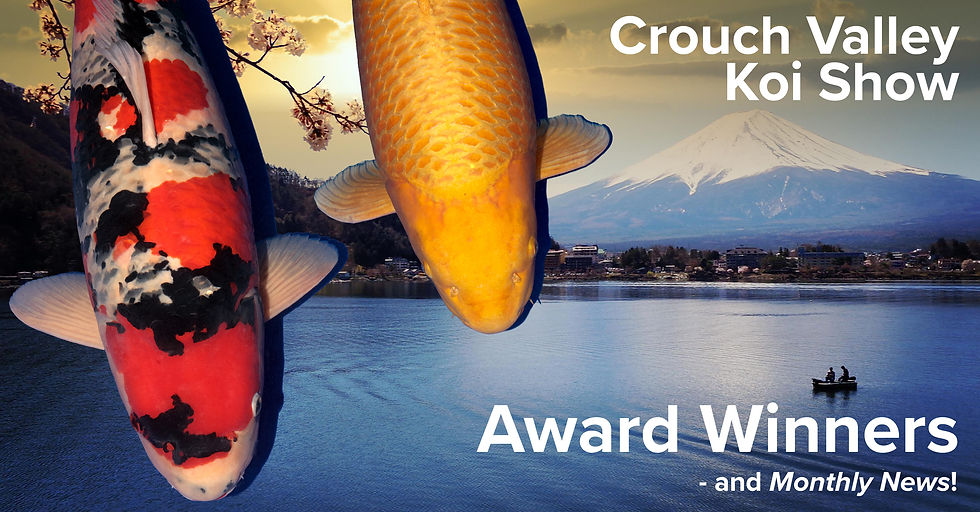Kujaku Challenge - Results
- World of Nishikigoi
- Dec 16, 2020
- 3 min read
Updated: Dec 17, 2020

It's time to announce the results!
The Kujaku Makoto believed to be the best koi for the future was...
A
Congratulations if you were successful!

Some Thoughts...
I think this koi may have been dismissed by some due to the gap at location 1 caused by the ojime (the end of the pattern). It does make the koi feel a little front heavy and this may have proved a bit 'off putting' at a quick, first glance...
However, the devil is in the detail and we can see that the lustre of the skin, the all important 'shine,' is very nice indeed. I would add though that I believe the lustre on all four koi to be pretty equal, with no clear ‘winner.’
Interestingly the koi with the lustre that stands out immediately is D, but this is pattern related. D has an area of white ground across the shoulders and back bone that really shows off the shine. White ground in this area is quite a useful weapon when selecting kujaku, as is white ground on the face. This is because the contrast of colour and shine in these areas compliment each other and become very eye-catching.
So if the lustre on all four koi is pretty equal and in fact puts D ever so slightly ahead due to the placement of the pattern, what sets A apart as the winner?
Scalation.
A has the most uniformly consistent scalation which is very important in the appreciation of kujaku. The 'scalation' refers to how the scales form and align on the koi - the more symmetrical and uniform, the better. Remeber any irregularities in shape, size or position, will only become more obvious as the koi grows. The scalation is further heightened with the development of the matsuba pattern or matsubamon (Pinecone pattern) this is what gives us the wonderful contrast between the dark centre of the scale and the lighter outer edge.
At a quick glance, one may think that C takes the trophy, however this is an illusion caused by the more developed matsubamon, which makes the scales appear more defined, in reality they lack uniformity. There are stray scales and scales of different shapes and sizes. B and D are definitely better, however B lacks uniformity and definition on the shoulders and D lacks at the tail tube.
On A, fully formed scales start immediately behind the head and flow in clear, symmetrical lines all the way to the tail (follow them from location 3).
I imagine Makoto would expect the matsubamon to develop more with age and enhance the koi and the beautiful scalation even further. Remember, great matsubamon can only be truly appreciated if the scalation is uniform to start with, it’s the combination of the two that elevate the quality of a Kujaku.
I think this challenge reminds us that it’s important to identify the foundations of what makes any variety special, in the case of kujaku, once we’d acknowledged that all four koi had very similar lustre, it was the all important scalation that pointed, quite quickly, to the number one...
Side Note:
As I detailed in the last post, Konishi Koi Farm produce some of the finest Kujaku in the world and writing this pushed me into a bit of a 'kujaku-goggling-wormhole...'
Just look at this...
WOW!
(Courtesy of Makoto Konishi)

The koi in question...















Comments